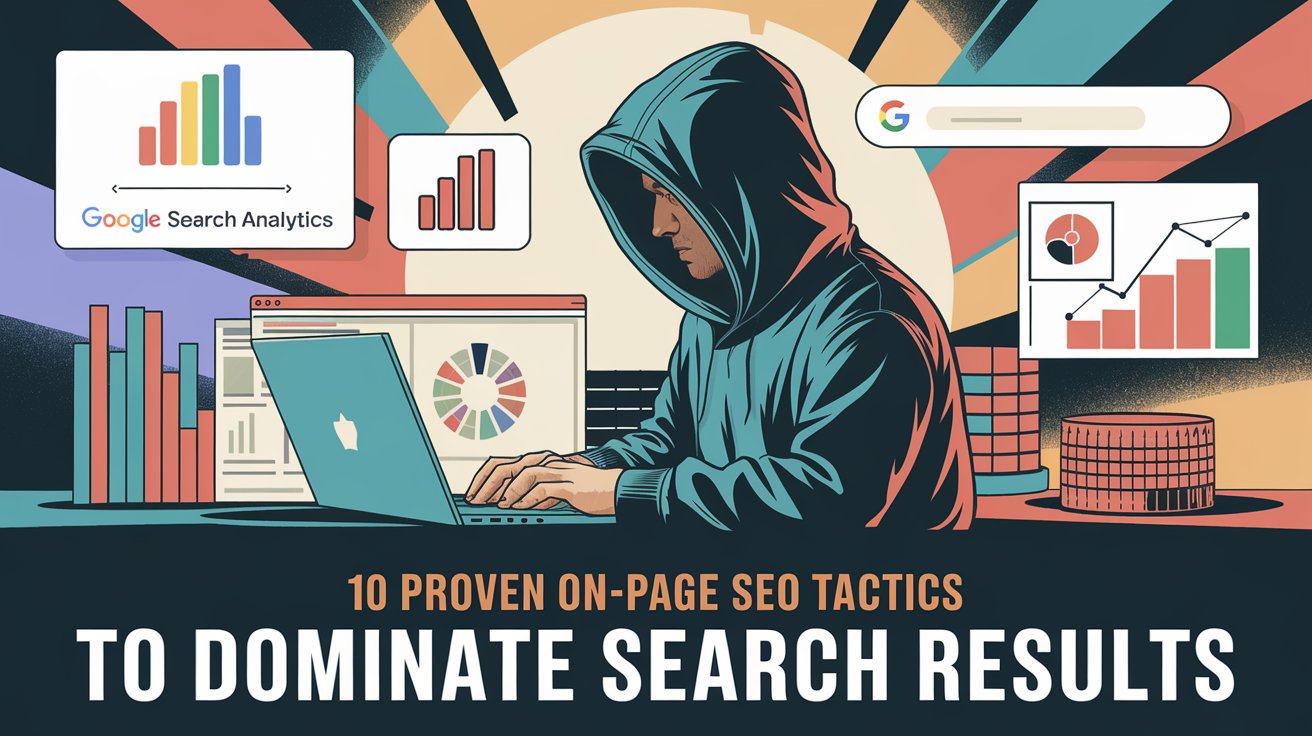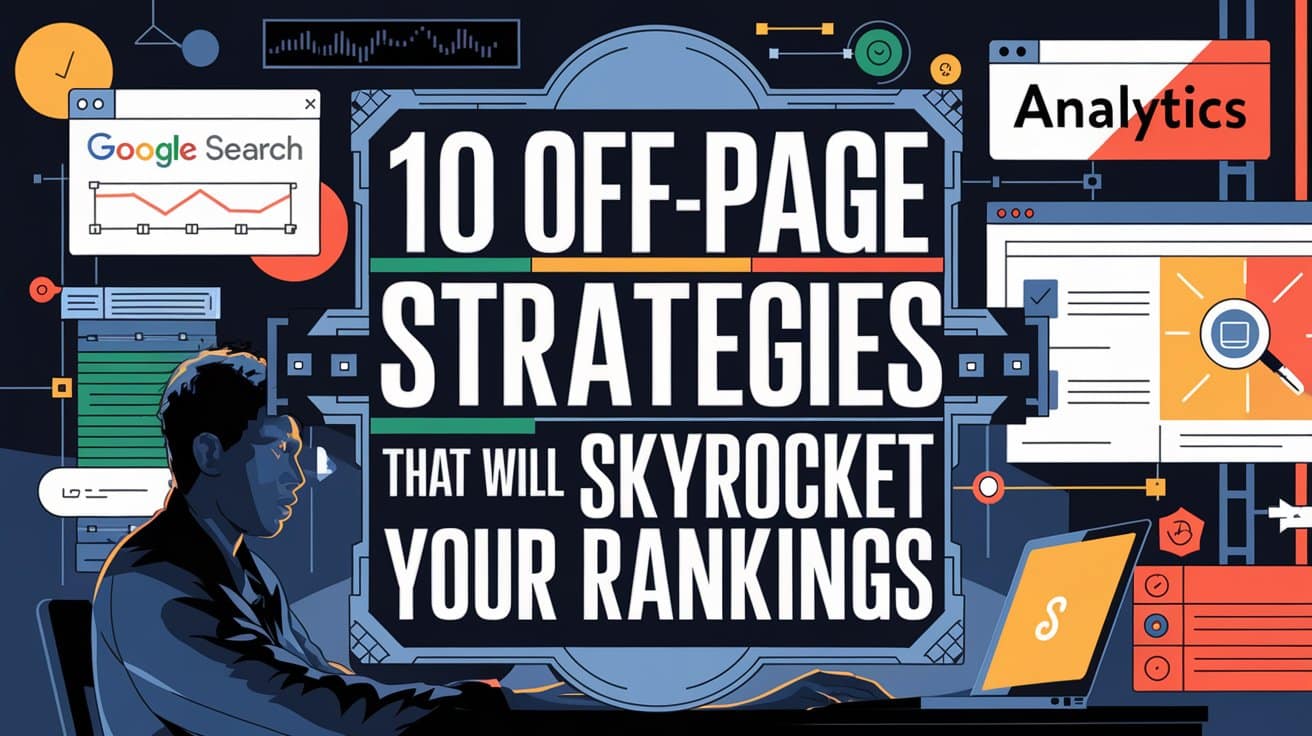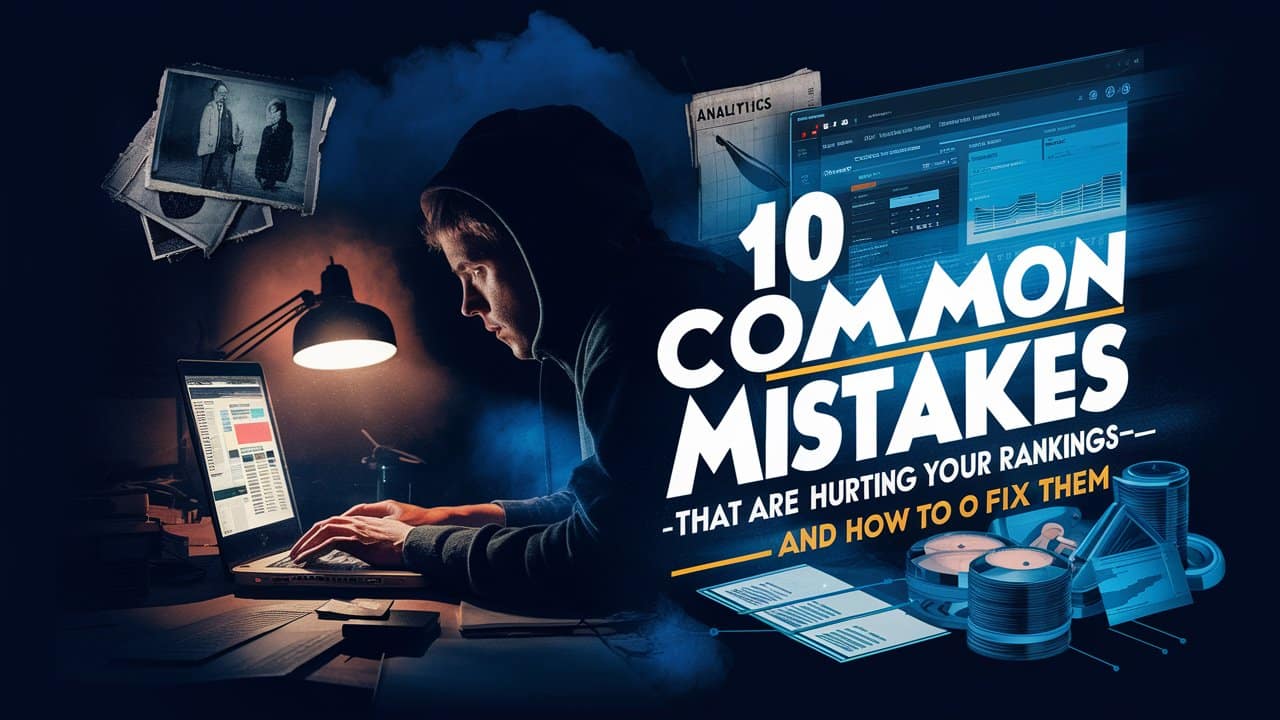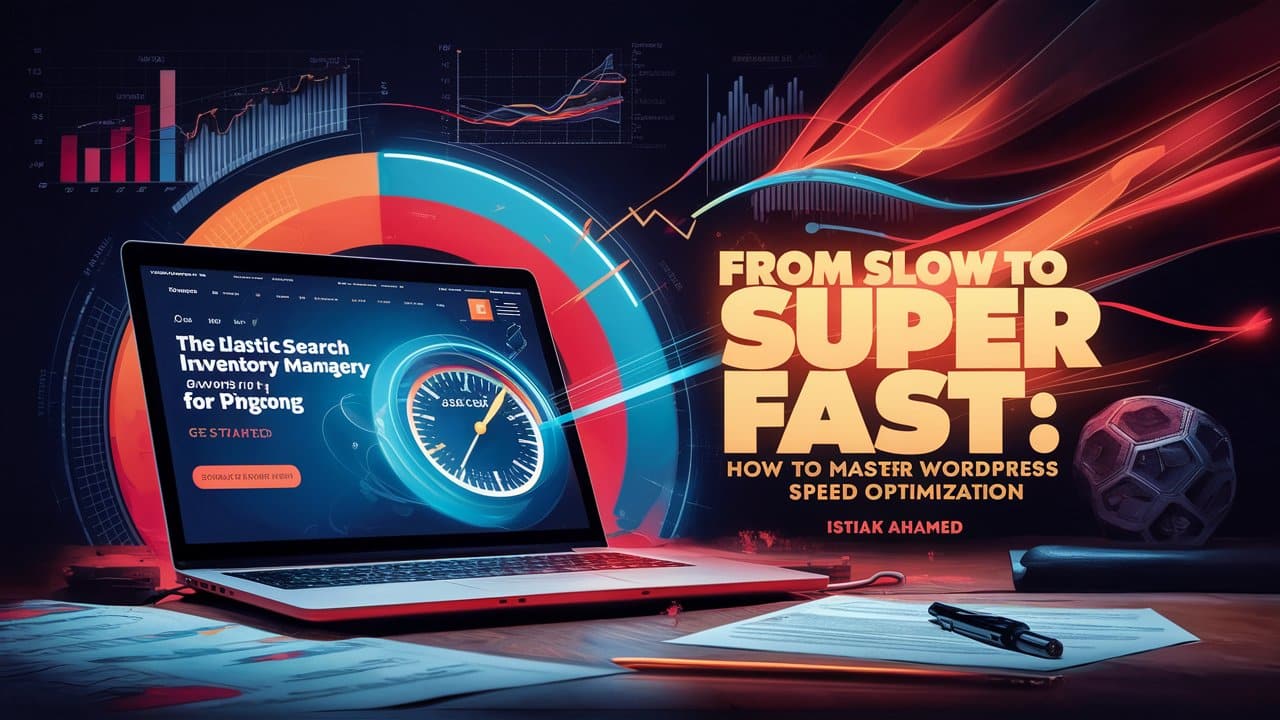Are you struggling to get your website to rank higher on search engines? Mastering on-page SEO is the key to climbing those rankings and standing out in the crowded digital landscape. Whether you’re a blogger, business owner, or digital marketer, these 10 proven on-page SEO tactics will help you outshine the competition and enhance your online visibility. Ready to elevate your site’s search performance? Let’s dive into these actionable strategies!
Summary
Mastering on-page SEO is crucial for boosting your search rankings. Focus on crafting SEO-friendly URLs, meta titles, and descriptions, optimizing headers and images, improving page speed, and ensuring mobile-friendliness. Implement internal linking and schema markup to enhance your site’s visibility and user experience.
Table Of Contents
Here’s the 10 on-page SEO technique to stand out in the crowded internet! Not to mention it also has a FAQs (Frequently Asked Questions) section to answer few of the common questions
1. Craft an SEO-Friendly URL
One of the important on-page SEO optimizations is The URL of your page, which is a crucial factor for search engines when indexing. To maximize its effectiveness, ensure it’s clear, concise, and includes your focus keyword. URLs should be descriptive and reflect the content of your page, giving users and search engines a clear idea of what the page is about.
Why Short URLs Perform Better?
Short, clean URLs are not only easier for users to read but also favored by search engines. They reduce confusion and are more likely to be shared, leading to higher click-through rates. Additionally, short URLs help maintain a tidy and organized site structure, which can positively impact SEO.
Importance of Including the Focus Keyword
Including your focus keyword in the URL helps search engines identify the main topic of your page. This practice boosts your chances of ranking higher for relevant searches. Ensure that the keyword is placed naturally and fits seamlessly into the URL to avoid keyword stuffing.

2. Create Engaging and Optimized Meta Titles
Meta titles are vital for SEO as they help search engines understand your content and encourage users to click through to your site.
How to Write Compelling Meta Titles
When creating meta titles, keep them concise, under 60 characters, and include your focus keyword near the beginning. A compelling meta title grabs attention and provides a clear snapshot of the page’s content. Craft titles that are both informative and intriguing to drive higher click-through rates.
The Power of Power Words
Incorporating “power words” such as “Proven,” “Ultimate,” or “Essential” can make your meta titles more attractive and clickable. These emotionally charged words draw users’ attention and make your title stand out in search results, which can lead to increased engagement and traffic.

3. Write Meta Descriptions That Enhance CTR
Meta descriptions summarize your page’s content and play a key role in determining CTR from search results. Your meta description should be between 150-160 characters and include your focus keyword. It should effectively summarize the page’s content while engaging users. A well-written meta description provides a snapshot of what to expect, encouraging users to click through to your site.
Length and Formatting Tips
Keep your meta description concise and avoid keyword stuffing. Focus on writing a natural and compelling summary that attracts users. Proper formatting, including a clear call-to-action, can significantly enhance user interest and improve your click-through rate.
Adding a Call-to-Action
Including a call-to-action (e.g., “Learn More,” “Find Out,” “Get Started”) can drive users to click through to your site. A strong CTA motivates users to take action, increasing the likelihood of higher CTR and better engagement with your content.
Here’s a formula I found very successful at getting a higher CTR

4. Optimize Headers (H1, H2, H3, etc.) for SEO
Header tags (H1, H2, H3) help organize your content, making it easier for both users and search engines to navigate.
Role of H1 Tags in SEO
The H1 tag serves as the main title of your page and should be clear, descriptive, and incorporate your focus keyword. This tag helps search engines understand the primary topic of your page and improves the relevance of your content in search results. Ensure it effectively represents the page’s main theme.
Structuring Content with Subheadings
Using H2, H3, and H4 tags to break your content into sections enhances readability and helps users easily navigate your page. Structured content allows search engines to better understand the organization of your information, which can positively impact your search rankings.
Use of Keywords in Headers
Including relevant keywords in your subheadings signals to search engines what your content is about. This practice improves your chances of ranking for various search queries and helps users quickly find the information they’re looking for within your content.
5. Focus on High-Quality Content Creation
Content remains the cornerstone of SEO. Writing high-quality, relevant content is crucial for achieving top rankings.
What Defines High-Quality Content?
High-quality content is well-researched, informative, and provides real value to your readers. It should be engaging and thoroughly cover the topic at hand. Quality content attracts and retains visitors, which can enhance your site’s authority and search engine rankings.
Relevance to Searcher Intent
Your content should address the needs and questions of your audience directly. By understanding and targeting searcher intent, you create content that resonates with users and meets their expectations, leading to improved user satisfaction and better SEO outcomes.
Role of Content Depth and Detail
Search engines prefer content that provides comprehensive coverage of a topic. Detailed and thorough content is more likely to be viewed as authoritative and useful, which can positively influence your rankings and increase your site’s visibility.
Here’s an example of SEO copy edits made by a professional.

RELATED POST: 10 off-page SEO Optimization Strategy
Off-page SEO is a crucial element in the grand scheme of search engine optimization, playing a significant role in determining where your website ranks on search engines like Google. While on-page SEO involves optimizing the content on your site, off-page SEO focuses on increasing your website’s authority by earning backlinks from other websites, engaging on social media, and more. In this article, we will explore ten powerful off-page SEO strategies that, when executed correctly, will skyrocket your rankings. To dive deeper into how these off-page tactics can elevate your site’s performance, learn more about our 10 Off-Page SEO Strategies That Will Skyrocket Your Rankings.
6. Implement Internal Linking
Internal links help search engines crawl your site efficiently and create a logical flow of content.
Importance of Internal Links for SEO
Internal linking distributes page authority across your site, aiding in the effective crawling and indexing of your pages. By linking to relevant content within your site, you improve navigation and enhance the overall SEO performance by establishing content relationships.
Creating a Web of Relevant Content
Linking to related content keeps users engaged and encourages them to explore more of your site. This increased dwell time signals to search engines that your site offers valuable information, which can enhance your SEO performance and user experience.
Optimizing Anchor Text for Better Rankings
Use descriptive anchor text that includes relevant keywords to provide context about the linked page. Properly optimized anchor text helps search engines understand the relevance of the linked content and can improve your rankings for related search queries.

7. Optimize Images with Alt Text and Descriptions
Images enhance user experience and offer opportunities to boost SEO through alt text and descriptions.
Importance of Alt Text for SEO
Alt text provides a description of an image, helping search engines understand its content. This practice also improves accessibility for visually impaired users. Including relevant keywords in alt text can enhance your image SEO and contribute to your overall search engine rankings.
Writing SEO-Friendly Alt Text
Create descriptive alt text that accurately represents the image and its context within the content. Avoid over-optimization by keeping the description natural and relevant. This approach helps search engines better interpret the image and improves the overall SEO of your page.
Compressing Images for Faster Load Times
Large images can slow down your page, negatively impacting user experience and SEO. Compress images to reduce file size without sacrificing quality, which helps improve page load times and can contribute to higher search engine rankings.

8. Improve Page Load Speed
Page speed affects your rankings directly, and slow-loading pages can lead to high bounce rates.
Tools to Test Page Speed
Use tools like Google PageSpeed Insights or GTMetrix to assess your page load speed and identify areas for improvement. These tools provide valuable insights into factors affecting your page speed and offer recommendations for optimization.
Techniques to Enhance Load Times
Optimize images, leverage browser caching, and minimize JavaScript and CSS files to speed up your website. Implementing these techniques helps reduce load times, improving user experience and boosting your search engine rankings.
Impact of Page Speed on SEO Rankings
Search engines prioritize fast-loading sites, making page speed a critical factor in your SEO strategy. Faster load times enhance user satisfaction, reduce bounce rates, and can positively influence your rankings in search results.

9. Ensure Mobile-Friendliness (Responsive Design)
With the increasing use of mobile devices, optimizing your site for mobile is essential.
Impact of Mobile Optimization on SEO
Google uses mobile-first indexing, meaning it primarily uses the mobile version of your site for rankings. Ensuring your site is mobile-friendly is crucial for maintaining good SEO performance and providing a seamless experience for mobile users.
Testing Mobile-Friendliness
Use tools like Google’s Mobile-Friendly Test to evaluate how well your site performs on mobile devices. These tools help identify issues that could affect mobile usability and provide recommendations for improving mobile optimization.
Key Mobile Optimization Techniques
Implement responsive design, ensure fast load times, and facilitate easy navigation for mobile users. These techniques enhance the mobile experience, helping to retain visitors and improve your site’s search engine rankings.

10. Use Schema Markup for Rich Snippets
Schema markup enhances how search engines interpret your content and displays rich snippets in search results.
What is Schema Markup?
Schema markup is a type of microdata that helps search engines understand your content better. By providing additional context about your page, schema markup enables the display of rich snippets, which can improve visibility and click-through rates.
How Rich Snippets Improve CTR
Rich snippets, such as star ratings, product prices, or event details, make your search results stand out in search results. This increased visibility can lead to higher click-through rates and better engagement with your content.
Adding Schema Markup to Your Site
You can manually add schema markup or use tools like Google’s Structured Data Markup Helper to generate the necessary code. Implementing schema markup helps search engines better interpret your content, leading to enhanced search result presentation.

Conclusion
Mastering on-page SEO is essential if you want to dominate search results and drive traffic to your website. By implementing these 10 proven tactics, you’ll not only improve your rankings but also create a better user experience for your visitors. Start applying these strategies today, and watch your site climb the search engine ranks!
FAQs (Frequently Asked Questions)
-
What is on-page SEO?
On-page SEO refers to optimizing individual web pages to rank higher in search engines. It involves techniques like optimizing meta tags, headers, content, and URLs.
-
How long does it take to see results from on-page SEO?
It can take anywhere from a few weeks to several months to see significant results, depending on the competition and the effectiveness of your SEO strategy.
-
Can I over-optimize my on-page SEO?
Yes, over-optimization, like keyword stuffing, can result in penalties from search engines. It’s important to strike a balance between optimization and user experience.
-
Are meta descriptions still important in SEO?
Yes, meta descriptions play a crucial role in improving CTR, which indirectly affects your SEO rankings.
-
How often should I update my on-page SEO?
It’s a good idea to review and update your on-page SEO every 6 to 12 months to ensure it aligns with the latest best practices.







